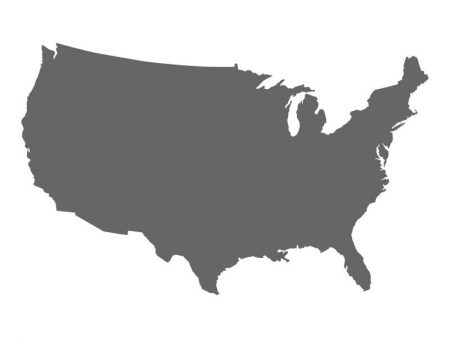Pediatric Bipolar Disorder Diagnoses Much More Common in US than England
 A 2014 article by Anthony James and colleagues in the Journal of the American Academy of Child and Adolescent Psychiatry reported that hospitalizations for pediatric bipolar disorder are 72.1 times higher in the US than in England.
A 2014 article by Anthony James and colleagues in the Journal of the American Academy of Child and Adolescent Psychiatry reported that hospitalizations for pediatric bipolar disorder are 72.1 times higher in the US than in England.
The researchers determined that there were 100.9 diagnoses of pediatric bipolar disorder per 100,000 people in the US, but only 1.4 cases per 100,000 people in Britain. The discrepancy in diagnoses for adult bipolar disorder and for other childhood psychiatry illnesses were smaller but still notable: While 158.2 adults per 100,000 in the US were diagnosed with bipolar disorder, only 22.1 adults per 100,000 in England received such a diagnosis, making the diagnosis of bipolar disorder in adults 7.2 times more common in the US. Diagnoses of childhood attention-deficit hyperactivity disorder (ADHD) were 13.0 times more common in the US than in England, while cases of childhood depression were 4.2 times more common in the US.
James and colleagues hypothesized several potential reasons for the dramatic difference in diagnosis rates at hospital discharge of bipolar disorder in children in the US versus England. The lower hospitalization rates for pediatric bipolar disorder in England may reflect the better availability of community or outpatient treatment options there. Diagnostic practices may also differ. James and colleagues suggested that in the US, pediatric diagnoses of bipolar disorder are often used to describe children and adolescents with irritability and frequent mood shifts, whereas English diagnostic practices rely more on episodic bouts of euphoria to diagnose bipolar disorder in children.
However, children in the US may simply be more likely to have a variety of childhood psychiatric disorders than those from England.
Editor’s Note: Epidemiological data support the view that bipolar disorder not otherwise specified (BP-NOS), which is often the earliest manifestation of bipolar disorder, is indeed much more common in the US than multiple other countries.
Even if there are some diagnostic differences that contribute to the immense 72.1 fold higher rates of hospitalization for childhood bipolar in the US compared to Britain, one cannot overlook the findings that these children are requiring hospitalization for something resembling bipolar disorder and are in need of treatment.
In England the researchers found no diagnoses of bipolar disorder in pre-adolescent children, whereas in the US, diagnoses in children under age 6 exceeded the rates of pediatric bipolar disorder in 19-year-olds in England. In a 2017 review article in the journal Neuroscience & Biobehavioral Reviews, this editor Robert M. Post and colleagues reviewed research on incidence of childhood onset bipolar disorder and found higher rates of the illness in the US than in Canada, Argentina, and several European countries. Genetic and environmental factors contributed to this vulnerability in US patients. Compared to Europeans in the Netherlands and Germany, those with bipolar disorder in the US have more family history of psychiatric illness and face more psychosocial stress in childhood.
Several studies have also found that general medical health in adult males is worse in the US than in other developed countries, as is life expectancy.
A 2006 study by James Banks and colleagues in JAMA, the Journal of the American Medical Association, reported a disparity in the medical health of adult males aged 55–64 in the US versus England. US men had a higher incidence of virtually every common medical condition, including diabetes, hypertension, heart disease, heart attack, stroke, lung disease, and cancer, and these results held up even when the researchers controlled for socio-economic status and access to health care. Banks and colleagues concluded that American men are in much worse health than British men.
In a 2018 editorial in the journal BMJ, Steven H. Woolf and Laudan Aron further highlight that after losing ground for decades, US life expectancy has now fallen below the average for other developed countries.
It looks like in addition to Americans suffering poorer general health than people in other developed countries, children in America may also be psychiatrically much sicker. The high rates of bipolar disorder in US children are catastrophic, not to mention the toll of conditions that tend to accompany bipolar disorder and other mood, anxiety, and behavioral disorders. Yet there does not appear to be any recognition of the magnitude of the problem or public sector attempts to ameliorate it.
Woolf and Aron end their BMJ editorial on a pessimistic note: “Ironically, leaders are outspoken about ending the opioid epidemic and bemoan spiraling and unsustainable healthcare costs. Solutions to both problems—which involve investment to support struggling families and communities and thereby improve public health—are often rejected, usually by leaders with competing self-interests or ideological objections. The consequences of these choices are dire: not only more deaths and illness but also escalating healthcare costs, a sicker workforce, and a less competitive economy. Future generations may pay the greatest price.” This editor (Robert M. Post) would further emphasize that most adult psychiatric disorders begin in childhood, and our current generation of children are already paying the greatest price.

